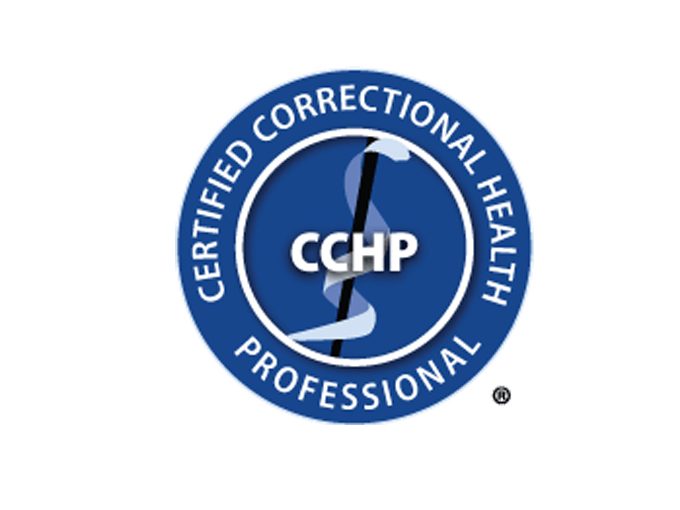
2024 Nominations Open for Annual NCCHC Awards
Submit yourself or a peer for an award. Deadline June 7/
Home To Avoid the Risk of Lawsuits, Never Say Never
 Jul 24, 2023
Jul 24, 2023by Taylor D. Brewer, JD
Nearly every deliberate indifference and medical negligence lawsuit involves an allegation that the facility denied care because of a rule cited by medical or security staff. Incarcerated patients file lawsuits over these seemingly rigid rules, arguing that the rules violate their constitutionally protected right to health care. Their allegations gain traction in court because, of course, health care professionals should tailor clinical care to the patient and not according to blanket rules. Judges and juries tend to assume a breach of the standard of care occurred when it appears that the provider applied a black-and-white rule with no exceptions instead of clinical discretion.
To prevent such lawsuits, facility staff need to avoid referring to rules, mandated guidelines, and inflexible protocols when communicating with incarcerated individuals about their health care. Even if written or unspoken policies exist to support those rules, be careful to avoid citing those policies in conversation or responses to requests and grievances. After all, anything you say can and will be used against you in a court of law.
Below are a few of the statements that most frequently lead to liability against correctional health care professionals.
“We never prescribe narcotics.”
Some iteration of “We never prescribe narcotics” appears in almost every case involving allegedly untreated pain. To add to the already complex relationship to controlled substances in health care, attitudes toward it are shifting as federal and state legislators implement new laws to confront the opioid epidemic. For instance, in April 2022, the Department of Justice announced the inclusion of opioid use disorder as a chronic disease in an amended section of the Americans with Disabilities Act. This change protects incarcerated patients with OUD against discrimination and increases access to appropriate medical treatment through medication assisted treatment programs. As the law changes to acknowledge and accommodate patients with substance use disorders, correctional facilities are incorporating MAT programs involving buprenorphine, methadone, and naltrexone.
As national recognition increases regarding the opioid epidemic and the addictive properties of controlled substances, protocols for treating pain are changing in all settings from acute to palliative care. Today, physicians are far more reluctant to prescribe these medications than they were 20 years ago.
While most correctional providers may rarely, if ever, prescribe narcotic medications, avoid telling patients that it never happens. Instead, explain that narcotics carry high risks for abuse and addiction, and for those reasons, providers often prescribe alternatives after weighing the risks and benefits. You can also explain that clinical discretion leaves room for exceptions.
In other words, assure the patient that the provider will exercise his or her judgment – based on education, training, and experience – to identify the circumstances that call for narcotics. Just because an outside specialist prescribed a narcotic does not mean the correctional provider will continue it. But do assure the patient that the provider will review the records, assess the patient, and speak with the specialist if necessary to determine the best therapeutic regimen.
Those conversations need to be documented in detail with attention to nuance. Instead of statements like, “Told patient this facility does not give narcotics,” for example, write, “Explained to patient risks and benefits of oxycodone and provider’s determination that an NSAID best fits the current presentation; will prescribe naproxen for a limited time and reexamine in four weeks.”
Do not tell patients that the formulary does not contain narcotics; that the provider must input a utilization management request for narcotics; or that the only exceptional circumstances that merit narcotics are, for example, postsurgical and end-stage cancer patients. Those statements are too black and white.
“We never treat preexisting conditions.”
Although routinely repeated by staff within the walls of jails and prisons to lower the expectations of incoming patients with preexisting conditions, the statement “We never treat preexisting conditions” is rarely true.
Hypertension, for instance, is one of the most treated conditions in corrections, and it is almost always pre-existing. It is misleading, then, to say that correctional health care does not provide for preexisting conditions.
For litigious patients, distinctions among the terms “elective,” “emergency,” and “preexisting” can be blurry. When a patient presents with a concern he or she believes needs treatment, staff must examine and assess the patient as any health care professional in the “free world” would do. That the patient did not seek treatment for years prior to incarceration is irrelevant to the course of treatment.
In contrast to hypertension, a stable hernia is a classic example of a preexisting condition that typically remains untreated in the correctional setting. The best approach is to explain to the patient that the hernia does not require surgery if it is reducible and unless it becomes incarcerated; order chronic care follow-up appointments to monitor the status and prescribe analgesic medications for discomfort.
That mirrors what would occur in the office of a general surgeon in the free world. The difference occurs if the incarcerated patient expresses desire for – or insistence upon – immediate surgery. In the free world, undoubtedly the patient could find a surgeon who would operate on a nonemergent hernia, but in corrections, patients cannot demand elective surgery.
Still, avoid making comments like, “We don’t offer elective surgery” or “We don’t treat standard hernias.” Instead, document the reasons surgery is not medically necessary, citing specific findings from the patient’s objective examination, and describe follow-up efforts to ensure the hernia remains stable and the discomfort is controlled.
Hepatitis C is another typically preexisting condition that receives significant attention from courts, and approaches to its management and treatment differ widely by state. Many patients with hepatitis C request antiviral medications immediately upon booking, despite having lived untreated for years. Be sure to approach communications regarding hepatitis C very carefully to ensure your explanation to patients conforms with state-specific requirements and Department of Corrections guidelines. Site medical directors need to remain knowledgeable on these guidelines and counsel staff on updated protocols within the facility.
Hepatitis C patients should receive consistent and routine blood work, and the results need to be discussed with the patients every time. At each visit, document the discussion and the plan moving forward and, as always, refrain from making overarching comments about whether and when the facility will offer treatment.
“We never send patients out for physical therapy.”
This statement appears in more allegations since the transition of many health care services from in-person to remote/telehealth during the COVID-19 pandemic. Those who work in corrections understand that facilities try to minimize off-site transportation for any reason, medical or otherwise. Fortunately, most judges observe firsthand the resources required to safely transport incarcerated individuals to court appearances and therefore understand the need to limit transport.
Nevertheless, telling a patient, “We don’t allow physical therapy” is much more likely to lead to a lawsuit than saying, “If the physical therapist deems it appropriate, we encourage a home exercise program.” Like stable hernias, ailments that benefit from PT rarely constitute medical emergencies. Still, those conditions can produce pain that PT will eliminate or significantly reduce, and occasionally the therapy is necessary. Therefore, do not tell patients that no formal PT program exists at the facility or that no PT patient gets transported to the therapist.
Instead, explain that while many PT patients can undertake exercises independently and with the help of on-site staff, some may require off-site visits. Assure the patient that the health staff will review the records, assess the patient, and speak with the physical therapist to determine the type and duration of PT – and of course, document all conversations with the physical therapist and the patient.
Health care is not one-size-fits-all, as any practitioner knows, and every incarcerated patient deserves the standard of care. Courts will look skeptically on any health care professional who explains a treatment tactic through wholesale, absolute terms that may not fit the patient’s situation.
Correctional health care professionals must remain conscientious of the language used in correspondence and communication with patients and must document the clinical decision-making behind all treatment choices. Avoid describing a typical treatment method as the only method and do not commit the health care team to any single approach. And remember: when in doubt, never say never.
Taylor D. Brewer, JD, is a partner with Moran Reeves & Conn in Richmond, Virginia.


